
Whole House Plumbing Inspections
Save Yourself The Trouble
For many people, buying a home is one of the biggest purchases you will ever make in your lifetime so be sure that you have the plumbing inspected in the entire home.
After all, there’s nothing worse than buying a new home and then discovering unexpected problems, such as leaky pipes or a toilet that doesn’t work properly when flushed. Therefore, before you decide to sign on the dotted line and buy the house of your dreams, make sure you get a professional plumbing inspection that will undoubtedly discover any potential problems you may be facing.
If there is one part of a home plumbing system that needs to be closely inspected prior to closing the deal on your new home, it’s the water heater. Because this is an appliance that lasts for 10-20 years, most homes have water heaters that are old and outdated. Therefore, you should make sure you find out just how old the water heater is.
If it’s approaching 10 years old, chances are it’s time the home had a new one. In some cases, the seller of the home may agree to buy a new water heater in order to ensure the deal gets done. If you’re in a seller’s market, concessions for a new water heater might be off the table.
If you think the water heater’s age is not an issue, then there are a few other factors to take into consideration. If you have a Hobson Plumbing and Heating plumber doing the inspection, they will look for such things as mineral deposits, corrosion around the bottom of the tank, or other signs of damage.
Sniff the Septic Tan
If you are planning to buy a home in the countryside, chances are it may have a septic tank to handle the home’s sewage needs. If this is the case with your potential new home, make sure you have one of our experts give it a thorough inspection. Important things to find out include where the septic tank is located, how big it is, its age, and the last time it was serviced or emptied.
Once the plumber begins an inspection, he will look for things such as standing water and bad odors. If either are found, it could indicate the septic system needs a major overhaul. If this happens, you can expect to spend several thousand dollars on the project.
In some cases, the home’s seller may be willing to either replace the septic system or knock several thousand dollars off their asking price in order to complete the transaction. The worst the seller can say is no. By doing this, you’ll be able to avoid a situation that could turn smelly, disgusting, and expensive in a hurry.
The Problems with Discolored Water
When touring a home, it’s important to turn on the faucets to see if the water is clear. If it’s discolored, that could be a sign of trouble. If the home is older, discolored water could be a sign of iron in the water, which can result in hard water that could cause damage to sinks, bathtubs, and toilets.
It could also be an indicator the home has very old pipes, which can corrode from the inside over the years and allow rust to get into the water. Thus, it’s important to have a plumber take a close look at the pipes to check their age and condition.
If it turns out the home is going to need a new plumbing system, you may want to look elsewhere for another home. However, if the seller is very anxious to sell the home and it’s one you have your heart set on, you may be able to negotiate a deal to get new pipes in the home before you move in.
Look at the Shut-Off Valve
Another item to check is the shut-off valve. Since this shuts off the home’s main water supply, it should be in excellent working order.
Otherwise, you could be in for quite a few problems. If the valve is turned off completely and water is still coming out of faucet taps, you’ll probably need to add this to the list of things to be replaced.
To determine if the shut-off valve works properly, have a plumber inspect it and then turn it off. Once it’s off, the plumber can then go around and see if water is still coming out of the taps. If so, another repair bill may be coming your way.
Inspecting the Toilet
Along with the water heater, it’s important to make sure the home’s toilet is in good working order. To make sure this is the case, a plumber will look at a number of things in the bathroom.
For example, one sign of trouble around the toilet will be water around the floor, which could indicate the toilet may be leaking and rotting the floor in the process. Also, if the tank appears to be sweating heavily, that could also indicate a problem.
Surprisingly, when many people take a tour of a home they are considering to purchase, they rarely bother to flush the toilet to see if it works, and that could be a mistake. In many cases, toilets in homes are older and in need of being replaced.
If a plumber flushes the toilet and it fails to fill up completely or is slow to empty, chances are there may be a problem in the home’s sewage line. Therefore, make sure a thorough inspection of any potential problems is done before buying the home, or you may be facing a large repair bill shortly after buying your home.

Spring Plumbing Maintenance Tips
Spring is a time for a lot of things, and most of them have to do with fresh starts, new beginnings, and rejuvenation.
Where Hobson Plumbing and Heating can be helpful is to provide you with some timely tips to help make sure your household plumbing is ready for the spring. By doing a little work now, you’ll have much more time to enjoy the beautiful weather that surely lies just around the corner.
For starters, spring is that time of year when the ground completely thaws, all the snow finally melts, “April showers” roll in and many local basements get flooded as a result. We’d hate to see yours become one of them, so here’s how to make sure it doesn’t:
Check Your Sump Pump
Check your sump pump to see if it’s working properly by pouring a bucket of water in the pit and then activating the switch. Also, be sure the discharge line is clear of leaves or other debris.
Consider A Backup Sump Pump
These turn on either when your main sump pump fails or your home loses power. At Hobson Plumbing and Heating, we offer both battery and water-powered backup sump pumps, each with its own unique set of advantages.
No Sump Pump? Act Now Before It’s Too Late
Don’t have a sump pump at all or maybe an older unit and your home or other homes in your neighborhood are prone to basement flooding? This might be the time to join the club and get one or have your existing unit inspected by one of our experts.
More Plumbing Tips To Consider
Leaky faucets also deserve prompt attention.
Leaky faucets and leaks in general can cause structural damage before you even realize something’s wrong. Keep a sharp lookout for water under your refrigerator, damp spots or water stains on your walls or ceilings, and the smell of must or mold.
Give a quick visual inspection for areas that are more prone to bulges such as an ice maker supply line, washing machine hose, and outdoor hose faucets.
How can you find out if your toilet is running?
Pour a teaspoon of food coloring in the tank and then, about a half hour later, check your toilet bowl. If the water is tinged that same color… yep, you guessed it, a leaking toilet tank!
Do you experience low water pressure?
While there are many possible causes, these are the ones we discover most often: a problem with your water heater, the need to have your water softener serviced, a hidden water leak, or, if you have one, a problem with your PRV (pressure reducing valve).
Once you’ve checked these items off of your list, call us to take care of any plumbing issues you find. We’re available 24x7x365!
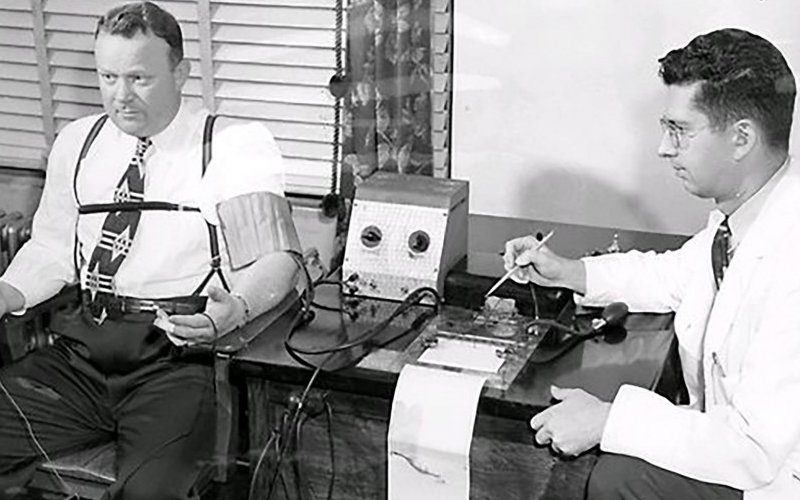
Hiring HVAC Technicians
It’s time to schedule a maintenance visit for your heating and cooling unit and before hiring, be prepared to ask a few simple questions to avoid getting scammed.
As a homeowner, you’re doing everything right to maintain your heating and cooling system and keep it in working order. Now, it’s time to hire an HVAC technician to do the job. How do you know WHO to hire for the job? Here’s what you should be looking for or asking every HVAC technician before hiring them to work on your system:
“Are you licensed and insured?”
Almost every state requires HVAC technicians to be licensed (Hobson License# 058-179219). If they’re not, you probably shouldn’t hire them to work on your system. Make sure to ask your technician if they are licensed or look on their website in order to get the license number from them — you can then look it up through your state contractor licensing board.
Additionally, it’s good to make sure the licensed HVAC technician is insured, just in case something goes wrong while they’re working in your home.
“How much experience do you have in the industry?”
Have they been working in the HVAC industry for a long time? Are they relatively new? Knowing how much experience an HVAC technician has can help you feel more comfortable about hiring them.
In addition, consider asking how they learned their skills. If you have a specific brand or type of system, determine if they have experience with that as well.
“What are the ratings and reviews from past customers?”
Almost every HVAC technician will give you a written estimate explaining what work will be done and how much it will cost. However, it’s important to get references, too. Your first thought might be to ask a family member, neighbor, friend, or to post on social media that you’re looking for a technician. Any of these options would be a good place to start. However, it’s good to talk to a few different contractors before making any decisions so it’s strongly advised that you take the extra step to look into the businesses’ authentic reviews and ratings to help you make a decision. Trusted ratings and reviews can be found on Hobson Plumbing and Heating’s Facebook page, Google, Home Advisor or Better Business Bureau.
“How do refunds, warranties, and guarantees work?”
Your current system may be under warranty, and a good HVAC technician will follow the terms of the warranty. Or, you may be past warranty, in which case they should give you a new guarantee in writing. Hobson Plumbing and Heating has a 100% satisfaction guarantee with our work.
It’s also good to ask about how refunds work. Make sure that you are hiring a reputable company that installs the equipment properly and fully discloses their policy. In most cases you can’t get your money back should the repair not last, however, a reputable company will work with you to find a solution.
In addition, energy and cost efficiency are also important to many homeowners. If it’s something important to you and you want to know more, or if you feel your system isn’t working as efficiently as it should, bring it up with the technician to find out their recommendations.
You don’t have to be an expert on HVAC systems to find a good technician. With these tips, you can hire the best person for the job and ensure your system runs smoothly and efficiently, keeping your home comfortable and saving you money.
If you need to schedule an appointment to service your HVAC unit, please contact us or call 630-761-3400.
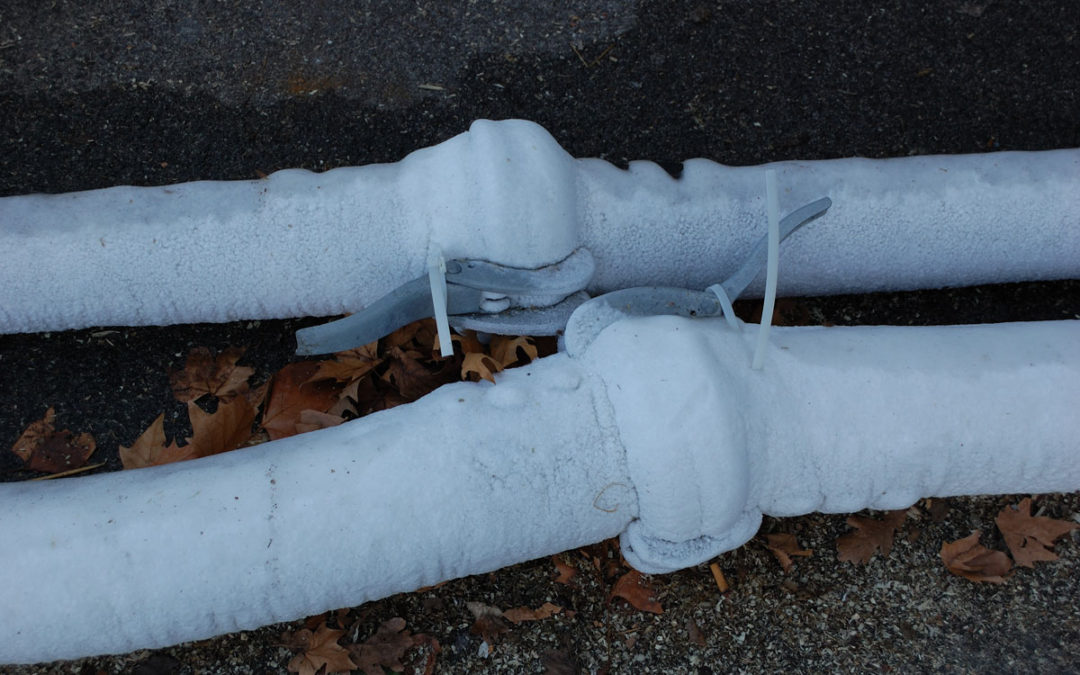
5 Ways to Prevent Freezing Pipes
Your heating and cooling system does more than provide you with a comfortable home environment, it helps to protect your plumbing too. Taking the heat from your furnace, you can prevent freezing pipes with these simple methods.
What You Can Do to Prevent Burst Pipes
#1. Close the Garage Door
Heat will escape through your garage. Make sure the doors stay closed whenever possible, especially if a supply line is located in there.
#2. Open Your Cabinets
This allows the heat from the furnace to circulate around your pipes. Make sure to remove access to any harmful substances, like cleaning chemicals, before using this option.
#3. Give Yourself a Drip
If you have pipes that are exposed, then keep water running through them. A slow drip really can prevent freezing pipes in cold weather.
#4. Use Your Thermostat Wisely
You can save a few bucks by throttling back the temperature in your home when you’re at work, but don’t do that in extremely cold weather. Sub-zero temperatures are not the time to save money on your heating needs. Keep your home temperatures constant for best results and don’t forget to install a smart thermostat to save money.
#5. Add Insulation
Wrapping the pipes in your crawl space, basement, attic, or garage will help to keep them at higher temperatures. Consider adding insulation products around drafty windows and doors to maintain the heating from the furnace more effectively.
If the pipes in your home have frozen or you are concerned about the status of your plumbing system this winter, contact a licensed plumber is your best option. Otherwise, you can use these options to prevent damage to your plumbing system during the next cold spell.
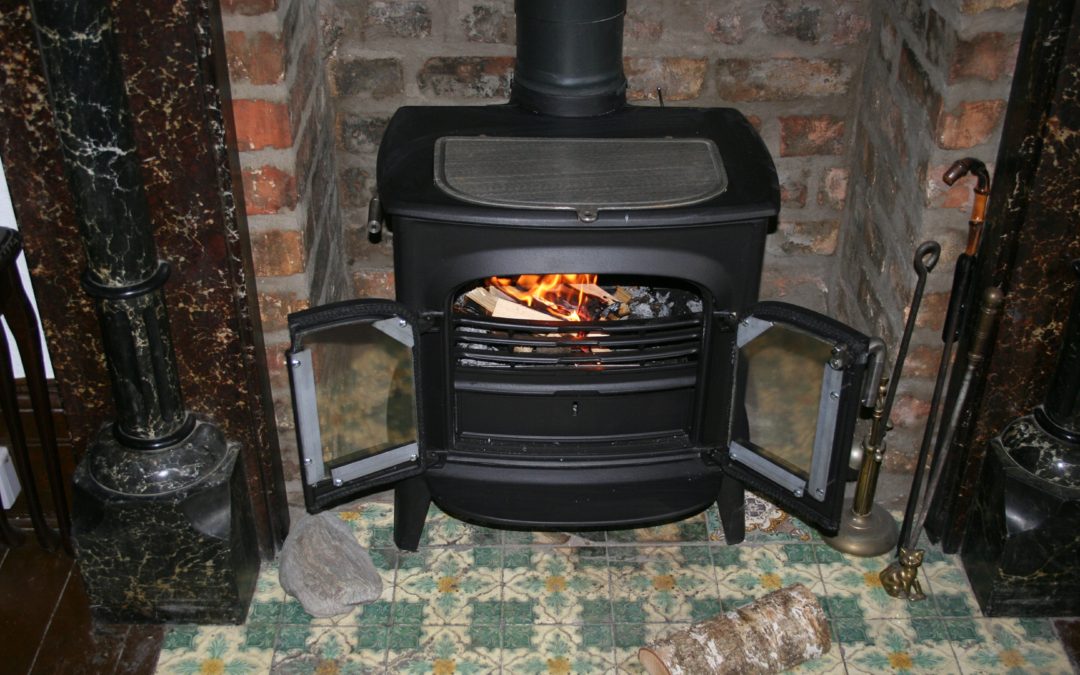
How to Keep Your Basement Warm During Chicago’s Brutal Winters
The problem is, basements are inherently damp and cold, especially in Chicago.
Having a basement is pretty useless if it’s too cold to actually spend time in. But don’t worry. We’ve listed some tips that will help keep your basement warm and habitable all winter long.
Tip #1: Add Carpet or Flooring
The typical basement floor is in direct contact with the cold ground. That means any heat in the basement will quickly escape via the floor if it’s uninsulated.
The solution? Covering cement flooring with carpet or floorboard. This extra layer of flooring/carpet acts as insulation between the cold floor and your feet. While adding carpet or flooring doesn’t necessarily add more heat to the basement, it definitely keeps any heat you have from escaping.
Tip #2: Add Insulation
If your basement walls aren’t already insulated, we suggest adding insulation immediately to keep heat from escaping via your basement walls.
Why? Well, most Chicago basement walls are made from a concrete block or poured concrete. Concrete is an excellent foundation but because it’s extremely porous, it’s a poor insulator, which means the heat from your home is easily lost through these walls. But adding insulation helps slow heat loss. Once you choose the insulation you need, make sure a professional installs it for you. They’ll make sure your insulation is installed correctly and to code.
Tip # 3: Replace Windows with Energy Star models
First, off, if your basement doesn’t currently have an “egress” window, you may need to install one to keep your home code compliant. An egress window is any window that is large enough, as defined by local building codes, for a person to exit the home in case of an emergency.
So if you don’t already have a window, make sure that you install one that’s Energy Star certified. If you do currently have windows, replace them with Energy Star certified models if they’re not already Energy Star certified.
Why?
Well, Energy Star certified windows are specifically designed to prevent heat from escaping your home but they also stop chilly air from seeping into your basement. In fact, by adding Energy Star windows, you can save up to 12% on your home’s heating and cooling costs.
Tip #4: Add a Heating Source
Options for adding more heat to your basement include:
1. Adding a space heater
Standalone space heaters are extremely affordable and efficient at providing heat to your basement. For example, these heaters can cost as little as $150 and can be installed without professional help.
Some examples of space heaters include:
The downfall to standalone heaters, though, is that they are limited in their heat output. Basically, if your basement is larger than 800 square feet, you might want to explore the following two heating options instead of a space heater.
2. Adding registers
Add registers to bring warm air from your home’s heating system/ductwork into the basement. You’ll want to consult a professional before deciding if this is a legitimate option for your basement. That’s because your heating system is designed to provide a specific amount of heat to every area in your home. But when you add more registers, that’s asking for even more heat that wasn’t accounted for when the system was first installed. And this can throw off the pressure inside your heating system, which ultimately can cause repairs and loss of comfort.
3. Installing a separate heating system
This is the most expensive way to heat a basement but it offers the most comfort. If you think this is the best option for your Chicago basement, you’ll want to first have a professional inspect your home and provide a quote for the installation of your new heating system.
Need help from one of our experts?
Just contact us. We’ll inspect your home and give you several options for heating your basement in the winter.
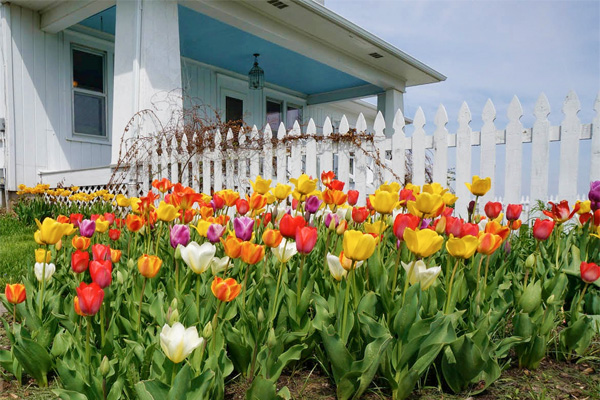
Spring Home Sales
Winter is upon us here in Chicago, and if you are thinking of selling your home, now is the time to get your house ready. Most buyers hire an inspector to look over a home before purchasing, below is a list of problems that are commonly found, which you can fix now to make selling your home much easier.
Plumbing Leaks
Some plumbing leaks can either go unnoticed by the current owner, or considered too small to repair. One nuisance can be leaks in a toilet’s seal. This can cause damage to the wood sub floor, which could be a deterrent to potential buyers.
Electrical Wiring Issues
A pesky rodent or a DIY project gone wrong could cause damage to wires, or leave connections not up to code. Most inspectors will check outlets to make sure they are wired correctly and properly grounded.
Furnace Cracks and Leaks
Cracks and leaks in your furnace and HVAC equipment may be technically working, some inspectors may note that the unit wastes energy or could be on its last leg. Either way, making sure your HVAC equipment is energy efficient and running well could help make for a quicker closing.
Windows
Old and broken windows with a broken seal, or a double-pane window that shows signs of condensation are items a buyer might want to be replaced or costs subtracted from the selling price. Fixing these items now, will ensure an inspector isn’t finding these problems later.
Appliance Safety
When installing a stove or oven, often times the installer may not include a safety device that prevents the appliance from tipping over. Check your user manual to determine where such a device would have been installed and check for yourself. When the inspector sees it there, you will be glad you took the time to take care of a small detail that could be seen as a bigger problem to a potential buyer.
It is the job of a professional home inspector to cover every inch of a buyer’s home to make sure they know exactly what kind of home they are about to purchase. Tackling the above problems can make for a positive inspection, a happy buyer, and an even happier seller.
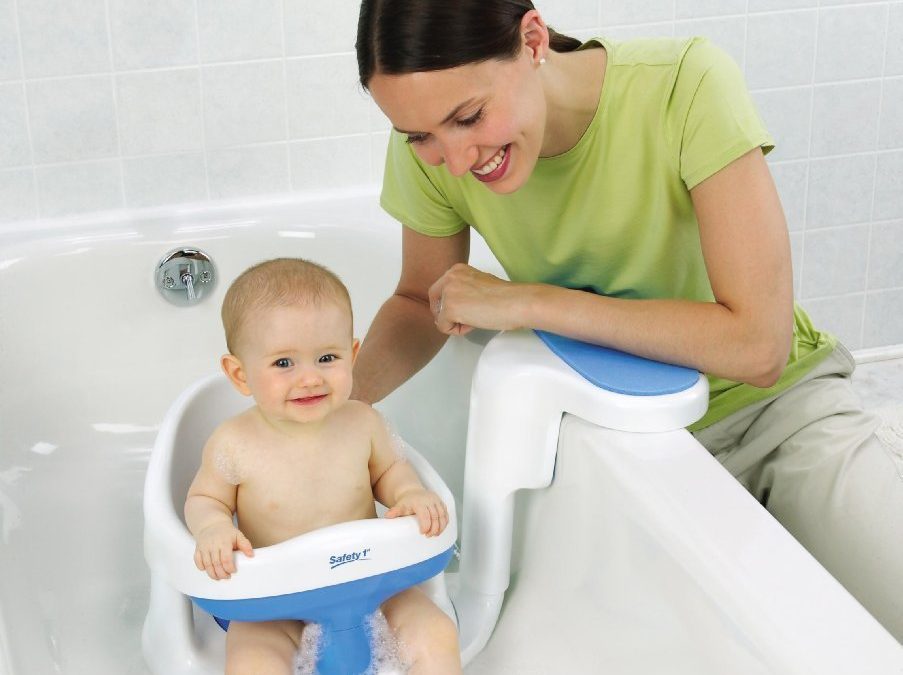
Safety Tips for Baths
Bath time with your little one can be an exciting AND a scary experience for a parent. Running the water at just the right temperature to keep your little one comfy; is the water too hot? Too cold? Using the softest of washcloths to clean their fragile bodies; is this the right soap for their skin? What if it gets in their eyes? Watching as they splash the water and watch bubbles float around.
To ensure that bath time with baby is more exciting and less scary, the Consumer Product Safety Commission (CPSC) has released new federal standards on infant bathtubs. These new standards include:
- Improved warning statements printed on infant bathtubs
- Allow more time for the latching or locking mechanism testing
- Improved performance requirements that address infant bathtub strength
It is suggested that you purchase an infant tub manufactured on or after October 2, 2017 to ensure that the baby’s tub meets the new safety standards.
While the CPSC has set guidelines as to how the tubs themselves can be safe, it is up to each parent to make sure that bath time with their little one is a safe time.
The following 4 tips are ways each person can keep their little one safe while keeping them clean.
- NEVER leave young children alone near water – All it takes is a moment and a little one can drown in even the slightest amount of water
- ALWAYS stay within arm’s reach of a child in a bathtub – if for any reason, you must leave the vicinity of the bathtub, take the child with you
- NEVER leave a young child in charge of a baby or toddler alone in a bathtub – babies can only safely be monitored in the tub with an adult, no matter how mature you think your child may be
- Learn CPR – When time is of the essence, knowing CPR can be the difference between life and death.
According to the CPSC, between 2004 and 2015 there were 31 infant deaths related to infant bathtubs; they are continually working to improve the safety of infant tubs in order to avoid future infant injuries and deaths.
Aside from the tub safety, the CPSC monitors the safety of all consumer products. A list of recalled products, from toys to HVAC, bikes to appliances, any item that has been recalled by the CPSC is listed on their website (www.cpsc.gov), along with information on what to if you have a recalled product.
Help keep dangerous items off store shelves by reporting hazardous items to the CPSC through their easy online form. All it takes is 10 minutes and you can help keep others informed about unsafe products.
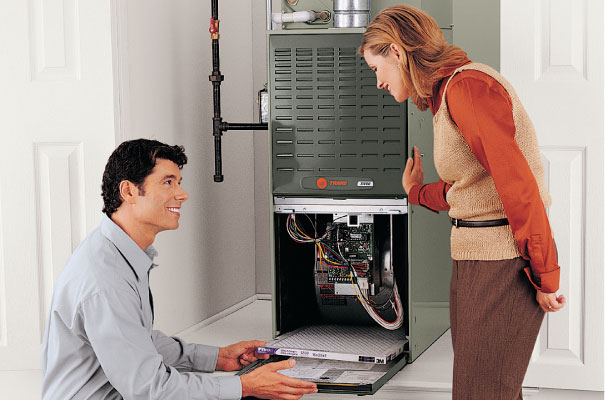
Is Your Furnace Ready For the 2018 Winter?
When the warmth of summer leaves us to face the cold and biting chill of winter, there is one thing that we know we can count on to keep ourselves and our families safe and comfortable: the furnace. In order for your furnace to properly care for you and your loved ones this winter, it is important that you take care of your furnace!
The best time to perform furnace maintenance is before the cold weather hits. Checking and prepping your furnace only takes a little bit of your time and ensures that your furnace will be running efficiently and effectively when you need it most!
The following list provides basic furnace maintenance that you can perform yourself. While performing these basic steps will help maintain your furnace, it is still important to schedule a professional inspection by a licensed HVAC technician.
Things you will need to perform basic furnace maintenance:
- Air filter
- Screwdriver
- Vacuum
Replace the air filter in your furnace every month
- Locate the filter and pull it out. Slide the new filter into the slot, using the arrows on the side of the new filter frame as a reference.
- Consider upgrading your current filter.
- A pleated filter, HEPA filter, or electrostatic filter will increase the energy efficiency of your furnace, allowing warm air to flow unimpeded throughout your home.
Clean your air vents and ducts
- Remove the vent covers with a screwdriver. Use the extension hose of your vacuum to remove dust. When you have replaced the cover, wipe down the surface of the vent exterior.
Inspect the blower belts for cracks
- Turn off the power to the furnace at the main circuit breaker. Use a screwdriver to remove the steel cover of the air handler. The blower belt is the largest rubber belt that you see. Check the belt for cracks. Replace the belt if any cracks are found. When you are finished, tightly close the blower doors.
Bleed your valves
- If you have a hot-water radiator, open the valves slightly and close them again when water starts to appear. This will keep water from freezing in the pipes.
Keep the area around your furnace unit clean and free of obstructions
- Sweep often and remove all debris. This helps to keep the filter clean and prevent accidental fires.
Open all your air vents
- Locate the lever switch directly to the side of the vent. Move the switch until the vents are completely open. Keeping airways open prevents the unit from overworking itself.
Utilize a programmable thermostat
- This device will enable you to set the temperature of the furnace for different times of the day. By programming your thermostat you will increase the efficiency of your furnace as well as reduce your household energy consumption, effectively lowering your energy bill.
Short on time? The professionals at Hobson Plumbing and Heating will gladly come to your home or office to perform a regular maintenance inspection. We have the experience and expertise to repair, replace, or install a new furnace and service any existing problems such as sensor, electrical or flame issues, clogged filters, thermostat problems or a malfunctioning ignition control. We know what you need to get through the upcoming winter. Our live staff is available 24 hours a day to answer any questions, so give us a call today!
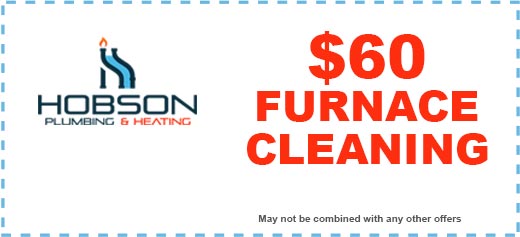
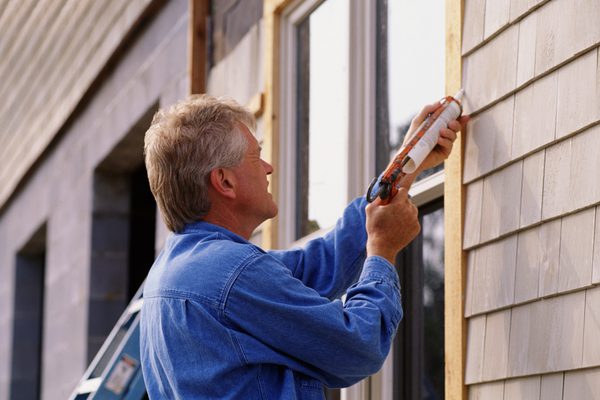
Maximize your home improvement investment with these 3 simple tips
If you plan to make any home improvements in 2017, you may be eligible for a tax break or two. Specific home improvements, or certain lines of credit that can be used for home improvements, qualify for a deduction or tax credit. As you evaluate how to spend your income tax return, work bonus, or decide to obtain financing from Hobson Plumbing & Heating, we want to help you maximize your investment.
Home Improvement Loan
You probably already know that your property taxes are usually tax-deductible, but you can also deduct the interest on a home improvement loan. The interest can be fully deductible up to $100,000, according to the IRS. It’s also possible to deduct the interest you pay on a home equity line of credit (HELOC) in most circumstances. Be sure to check with your lender and if needed your Accountant, prior to signing on the dotted line. We now offer financing so don’t hesitate to ask one of our Hobson Plumbing & Heating professionals today!
Increasing Energy Efficiency
Making a home greener offers huge incentives, including decreased energy costs and tax credits from federal, state and local governments. As noted by energyStar.gov, examples of improvements and equipment included in the federal tax credit group are:
- Biomass stoves: About $300 credit for units with a thermal efficiency rating of 75% or more
- Air source heat pumps: $300 credit
- Central air conditioning: $300 credit
- Gas, propane, or oil hot water boilers: $150 credit
- Gas, propane, or oil furnaces and fans: $150 credit for furnace, $50 for main air-circulating fan
- Insulation: Up to $500 or 10% of the cost, whichever is lower
- Roofs: 10% of the cost up to $500
- Non-solar water heaters: $300 credit
- Solar water heaters: 30% of the equipment and installation costs with no cap on amount
- Windows, doors, and skylights: 10% of the cost up to $200 for windows and skylights; up to $500 for doors
- Geothermal heat pumps: Up to 30% of equipment and installation costs
- Small residential wind turbines: 30% credit
- Residential fuel cells: 30% of the equipment and installation costs with no cap
Capital Improvements
Are you getting your home ready to sell? Some repairs can qualify as capital improvements such as:
- Replacing the roof
- Replacing windows, gutters and doors
- Replacing the furnace or HVAC system
Let the experts at Hobson Plumbing & Heating take care of your home improvement plumbing and HVAC needs today by contacting us at 630-761-3400!

Prevent Home Flooding This Spring with Sump Pumps
Springtime storms can increase the chance of flooding in your home without a properly working sump pump. As part of our 2017 Plumbers guide to spring cleaning, we show you the importance of a properly working sump pump system.
Water getting in
Depending on the materials used to construct your home, flood water may enter in one of multiple ways. Typically, the area of your home most threatened by flooding is the lowest level of the home such as the basement and/or crawlspace).
If your building was constructed primarily out of concrete, water may force its way through tiny cracks in the concrete and into the home. Other types of masonry may be affected similarly by flood water depending on the material and the force of the flooding.
Flood water could seep into your home under your foundation through the soil by method of hydro-static pressure. This scary-sounding term refers to the tendency of water to try and find its way through to open space. If your home is surrounded on all four sides by flood water, this water pressure will mean that the water will eventually find a way through if your home is not waterproofed sufficiently.
Keeping the water out
Speaking of waterproofing, your home likely already has measures in place to prevent hydro-static pressure from allowing water to enter your home. This may include a series of gutters and downspouts surrounding the home that directs heavy rainfall away from the soil surrounding your home’s foundation.
Depending on when your home was built, a special type of water-proof compound was likely sprayed all around your home’s foundation to deter or repel water from entering in through concrete or other building materials.
Sump pumps
Water tends to still manage its way inside a home. What happens then?
Enter sump pumps – your secret weapon to preventing flooding from damaging your home. This pump can collect water gathering in or near your home’s foundation and pump it back outside and away from your home. Sump pumps come in many sizes and varieties; if you have a large home or are in an area with a high risk of flooding, your sump pump should be larger to accommodate this extra potential water.
Your sump pump should also have battery back-up if your home is at a high risk of flooding – you wouldn’t want a thunderstorm to knock out your power and prevent your sump pump from keeping water out of your basement.
Protect your bottom floor with properly working sump pumps
Don’t let this spring become a nightmare for you and your family. Make sure your sump pump is prepared to take on spring flooding by contacting us to set up an appointment today. You can reach us on our website or by calling us at (630) 761-3400. With what’s at stake, can you afford to wait any longer?
